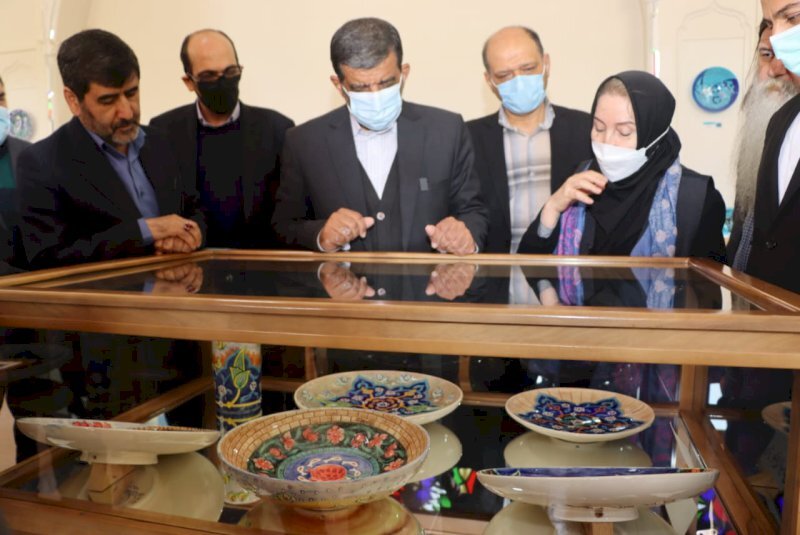Tabriz pottery museum still unknown, tourism minister says

TEHRAN – Iran’s tourism minister has said the Live Pottery Museum of Tabriz is still unknown and it needs to be promoted and introduced more effectively.
Cultural Heritage, Tourism, and Handicrafts Minister Ezzatollah Zarghami made the remarks during a visit to the museum on Saturday.
“It is essential to make a comprehensive documentary about this museum to introduce it to as many people as possible.”
The Live Pottery Museum of Tabriz is a great example of creativity and artistic development since the visitor is present during both the beginning and the end of the creation process of a work of art and is closely involved with it, the minister added.
The ministry is prepared to take any action needed to boost interest and the market for this valuable art form, he explained.
The Live Pottery Museum of Tabriz has been established in the historical mansion of Sarraflar, dating back to the Qajar era (1789-1925).
In addition to permanent and temporary exhibitions, there are shops and training classes at the museum.
Soaked in history and culture for millennia, Tabriz embraces several historical and religious sites, including the Jameh Mosque of Tabriz and Arg of Tabriz, and UNESCO-registered Tabriz Historic Bazaar Complex to name a few. The city became the capital of the Mongol Il-Khan Mahmud Gazan (1295–1304) and his successor. Timur (Tamerlane), a Turkic conqueror, took it in 1392. Some decades later the Kara Koyunlu Turkmen made it their capital, it was when the famous Blue Mosque was built in Tabriz.
The city retained its administrative status under the Safavid dynasty until 1548 when Shah Tahmasp I relocated his capital westward to Qazvin. During the next two centuries, Tabriz changed hands several times between Persia and Ottoman Empire. During World War I, the city was temporarily occupied by Turkish and then Soviet troops.
ABU/AFM
Leave a Comment